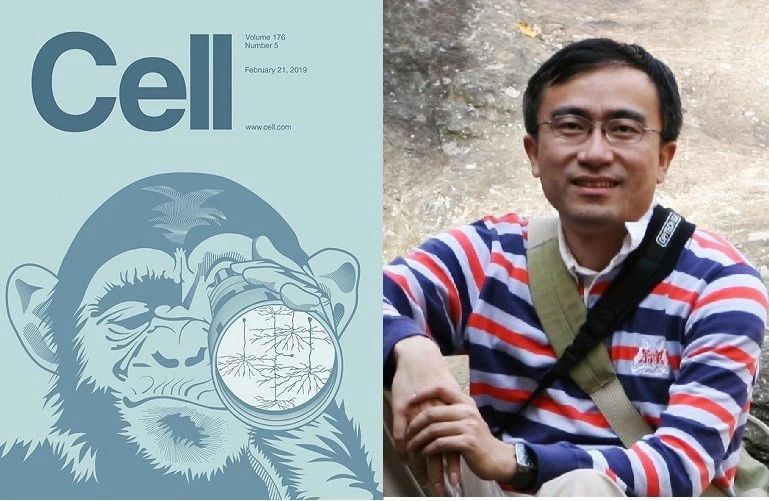Research led by Tian Xue, Alumni of the School of the Gifted Young, was recognized as the “Best of 2019” in “Cell”
Research led by Tian Xue, Alumni of the School of the Gifted Young, was recognized as the “Best of 2019” in “Cell”
On January 6, 2020, Cell compiled a list of the 9 best and most innovative articles of 2019. Prof. Tian Xue (SGY ‘95) from University of Science and technology of China and his group’s work of developing ocular injectable, photoreceptor-binding, upconversion nanoparticles that could extend the mammalian visual spectrum to the NIR range for the first time was one of the selected works.

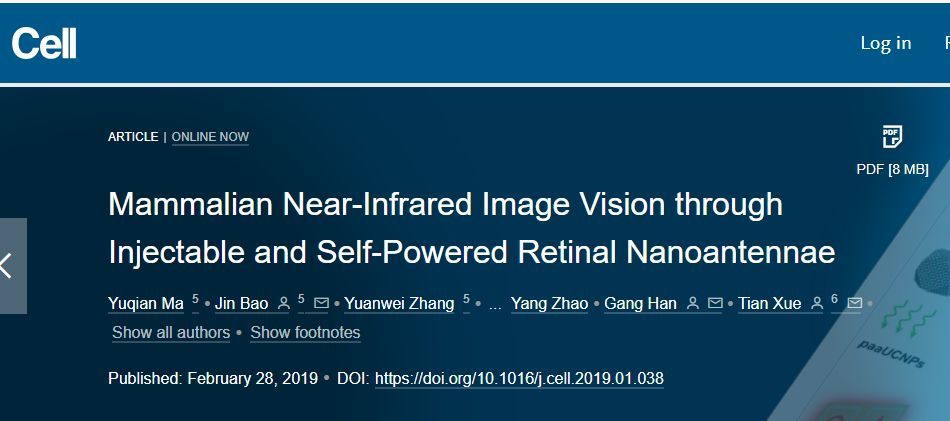
On February 28, 2019, Tian’s research group in the Department of Life Science and Medicine, University of Science and Technology of China, along with the research group of professor Gang Han, University of Massachusetts Medical School co-published an article in the top life science journal Cell. They combined visual neuromedicine and innovative nanotechnology to extend the mammalian visual spectrum to the NIR range for the first time. Their article was selected to be promoted by the journal via a video summary.
The range of the electromagnetic spectrum is wide, including rays, X rays, UV rays, visible light, infrared, microwave, radio waves, etc. Because of the physical thermodynamic properties of the opsins, the proteins responsible for detecting light in mammals, our eyes detect only visible light, which is just a small part of the electromagnetic wave spectrum (Fig.1).
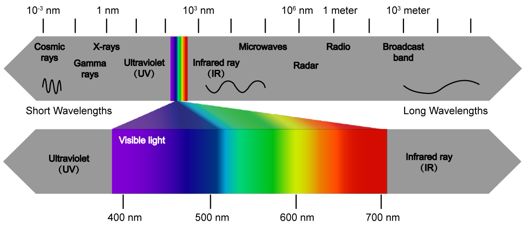
Due to this limitation, mammals cannot see light beyond 700 nm in wavelength, let alone project an NIR image to the brain. However, infrared light exists widely in nature and detecting it can help us get much more information than that contained by visible light. For example, humans invented infrared imaging systems based on photoelectric conversion and photomultiplier technology in order to obtain night-vision. However, such devices still have a lot of disadvantages. For example, it is not easy to move wearing the device, and it is bulky, needs to be powered by a limited battery and may be overexposed by strong light, etc.
To solve these problems and develop the self-powered, built-in NIR light nanoantenna that can extend the mammalian visual spectrum, the research group tried to import a kind of nanomaterial which can absorb infrared and release visible light into mammals’ retinas in order to allow mammals to detect infrared. In vitro a single photoreceptor cell photophysiological record proves that the nanomaterial is able to activate the electrical reaction of mouse rod cells after absorbing infrared photons. To decrease the distance between nanoparticles and photoreceptors to improve the infrared sensitivity and make them stay longer on the retina, the researchers developed a new method of surface modification, which allows the nanoparticles to bond strongly with the special sugar molecules on the surface of photoreceptor cells so that they are firmly connected onto the surface of the photoreceptor cell.
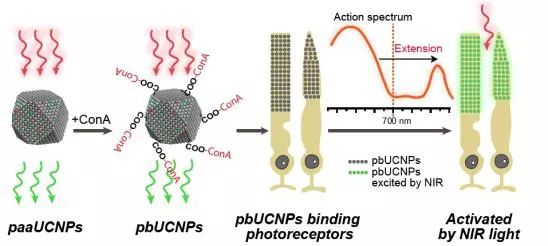
These modified nanoparticles become a kind of nanoantenna that is passive and self-powered. The researchers named the injectable nanoantennae pbUCNPs, short for photoreceptor-binding upconversion nanoparticles. From a variety of neuro-visual physiological experiments, including vivo electroretinograms (ERGs) and visually evoked potential (VEP) recordings in the visual cortex, to animal behavioral tests, the researchers further demonstrated that mice injected with pbUCNP acquired not only NIR light sensation but also unique ambient daylight-compatible NIR light image vision.
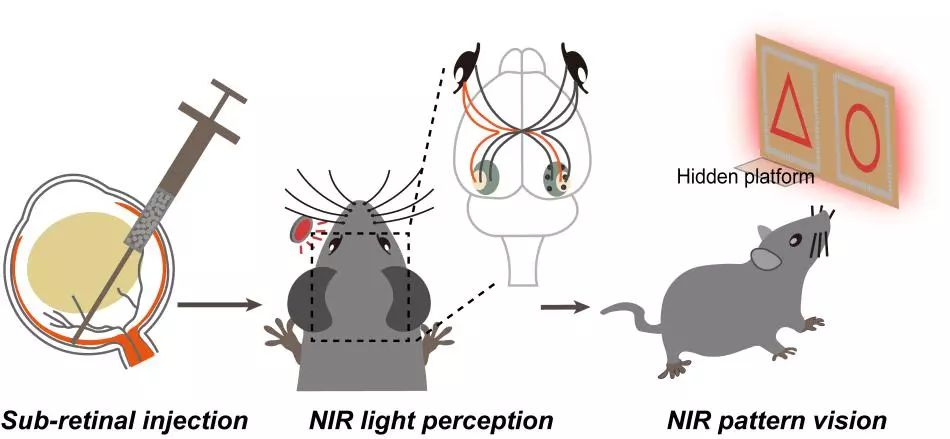
Moreover, the acquirement of sensitivity to NIR light did no harm to the animals’ visible light sensitivity. Excitingly, they found that pbUCNP-injected animals perceived both NIR and visible light patterns simultaneously. Moreover, they found that pbUCNPs nanomaterials were proven to be biocompatible. They comprehensively examined the biocompatibility of the pbUCNPs and found negligible side effects. These results shows that this technology could effectively expand the scope of the visual spectrum of mammals.

Yuqian Ma, a doctoral student from the division of Life Sciences and Medicine of University of Science and Technology of China, Jin Bao, a distinguished professor from Chinese Academy of Sciences, and Yuanwei Zhang, from the Gang Han research group, are first authors of the paper. Prof. Tian Xue is the lead contact and Prof. Jin Bao and Prof.Gang Han are the co-corresponding authors of the paper. The researchers received funding from the National Key Research and Development Program of China, the Strategic Priority Research Program of the Chinese Academy of Science, the National Young Scientists 973 Program of China and the Human Frontier Science Program.
Tian Xue began studying at SGY after his graduation from the No.1 middle school of Xuzhou, Jiangsu province in 1995, and got his bachelor’s degree in biophysics and neuroscience in 2000. He later got his doctoral degree in Cellular and Molecular Physiology in Johns Hopkins University School of Medicine in 2005. Tian Xue is mainly engaged in the research of phototransduction, neural circuits, stem cells and regenerative medicine. His research has been published in top journals, including Nature, Nature Neuroscience, PNAS, Stem Cell, Circulation, and others. Among them, an article in Nature in 2011, in which he served as both the first and co-corresponding author, revealed the molecular mechanism of non-imaging visual signal transduction. Another work, which used embryonic stem cells to generate cardiac muscle and pacemaker cells, was published in “Circulation,” the flagship journal of cardiology, and was recognized as the Best Basic Science Paper by the journal that year.
After returning to China and becoming a full-time professor in the Life Sciences and Medicine of University of Science and Technology of China and Hefei National Laboratory for Physical Sciences at the Microscale, he was recognized by the Distinguished Young Scholars Program of the National Natural Science Foundation of China, and received support from the National 973 Project as chief scientist, and from the National Major Scientific Research Program of the Ministry of Science and Technology.
Congratuations Tian!



